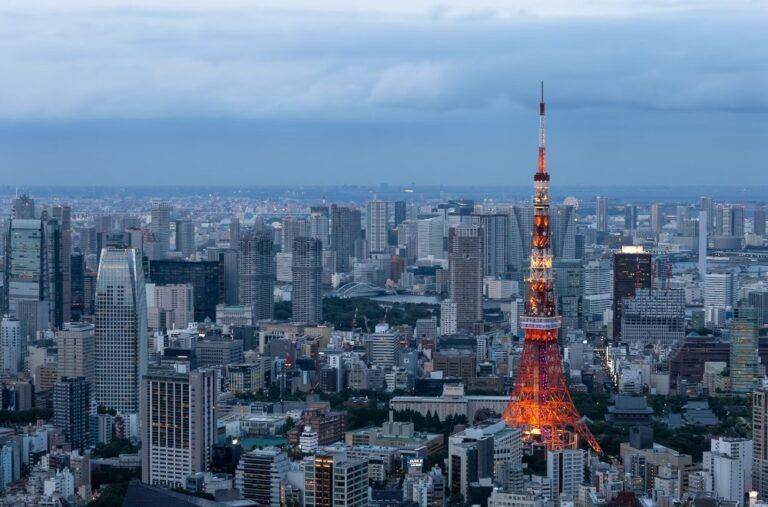In an era in which the majority of the world’s population lives in urban areas, cities take on an increasingly significant role as the predominant environment of human beings.
Urbanization is a constantly growing trend, with over 57% of the world’s population, equivalent to over 4.5 billion individuals, residing in cities of various sizes spread across the globe.
Table of Contents
Projections on urbanization
According to United Nations projections, the global urban population will increase by an additional 700 million people by 2030, reaching a total of 5.2 billion.
This increase does not only concern the number of cities, but also their size: the so-called megacities, with more than 10 million inhabitants each, currently number over 30 and are expected to reach more than 40 by 2030.
However, defining the “world’s largest cities” is no simple task. In recent decades, cities have expanded to form enormous agglomerations, where administrative boundaries become increasingly blurred, making it difficult to establish precise limits. Furthermore, the very definition of “city” varies from country to country.
UN metrics for urban population
The United Nations considers several metrics to determine the populousness of a city, which may include the city’s administrative area, urban agglomeration, or overall metropolitan area.
Furthermore, urban population data are often based on estimates rather than direct censuses, which can lead to variations between sources.
That said, by focusing on the metropolitan area as a whole, we can fully appreciate the breadth of the urban environment.
The 10 most populous metropolitan areas in the world
Below are the ten most populous metropolitan areas in the world, based on the Demographia World Urban Areas report:
Tokyo-Osaka-Kobe, Japan
The Japanese megalopolis, also known as the Greater Tokyo Area, is a vast urban region spanning Tokyo, the capital of Japan, along with the surrounding cities of Yokohama, Osaka, Kyoto and Kobe.
With a population of around 90 million people, it is the most populous megalopolis in the world. Tokyo is a global financial center, a major technological and cultural power, while Osaka is known for its manufacturing and trade industry.
Shanghai, China
The megalopolis of Shanghai is one of the largest in the world, with a population of approximately 35 million people.
This urban region encompasses Shanghai, one of China’s most important cities, along with Suzhou, Hangzhou and Nanjing. Shanghai is a global financial and trade center, a major technological and industrial hub.
Delhi, India
With a population of around 30 million people, the Delhi metropolitan area is one of the largest in the world.
It includes the city of Delhi, a key political, commercial and cultural center in India, along with Gurgaon and Noida, important technological and industrial hubs.
Seoul-Incheon, South Korea
This megacity includes the South Korean capital of Seoul, along with the port city of Incheon and other satellite cities such as Suwon. With a population of around 25 million people, it is a major technological, financial and cultural center in Asia.
New York City, United States
The New York City metropolitan area is one of the most influential urban centers in the world. With a population of approximately 23 million people, it includes not only New York City itself, but also cities such as Newark and Jersey City.
It is the leading global financial center, home to financial institutions, multinational corporations and a vibrant cultural scene.
Ciudad de México, Mexico
The Mexico City metropolitan area is one of the largest in Latin America, with a population of approximately 22 million people. It includes Mexico City itself, a major financial and cultural center of Mexico, along with cities such as Ecatepec and Nezahualcóyotl.
São Paulo, Brazil
With a population of approximately 21 million people, the São Paulo metropolitan area is the largest in South America. It includes the city of São Paulo, a major financial and industrial center, along with satellite cities such as Guarulhos and São Bernardo do Campo.
Lagos, Nigeria
With a population of approximately 21 million people, the Lagos metropolitan area is the largest in Africa. It includes the city of Lagos, a vital financial and commercial center in Nigeria, along with cities such as Ikeja and Lekki.
Mumbai, India
The Mumbai metropolitan area is one of the densest and most populous in the world, with a population of approximately 20 million people. It includes the city of Mumbai, a major financial and commercial center in India, along with Navi Mumbai and Thane.
London, United Kingdom
The London metropolitan area is one of the largest in Europe, with a population of around 14 million people. London is a major global financial centre, home to multinational and rich cultural heritage.
Read also: Metaverse, these 5 cities are entering it by developing digital twins












